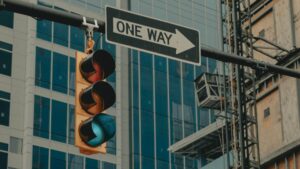We typically work with businesses that have mature products. These products often have an extensive user base, years of prior development, and countless lines of code that have accumulated over time. However, what they usually lack is a dedicated UX team, leading to features growing out of control without much thought to usability. When usability is compromised, even well-established products can struggle with engagement and efficiency.
Take DrinkAware and their massively popular DrinkCompare Calculator web tool. Despite its high traffic, the tool faced usability challenges until we stepped in to revamp it. In the year before our involvement, 50,000 people completed the calculator. This demonstrates how mature products can continue to draw users but struggle with UX consistency.
The challenge with redesigning complex products is that once they reach a certain level of complexity, tackling everything at once becomes impractical. And with complexity comes unpredictability:
- How do you approach a product that has never been optimised through the UX design process?
- What should the end goal be?
- Where do you even start?
It can feel overwhelming, but the right approach can turn a daunting challenge into a structured process. By systematically evaluating key areas, teams can ensure every decision is guided by both business objectives and user needs. With the right prioritisation and an agile mindset, even the most complex products can be improved without disrupting existing functionality.
The art of ruthless prioritisation
Redesigning a complex product should never be approached as one massive project. Instead, breaking it down into smaller, manageable components is key. The goal is to identify the areas that will deliver the biggest impact within the available time and budget.
Start by defining your core objectives. Consider:
- Is increasing conversions your highest priority, or is revenue growth more important?
- Do you need to improve brand perception? For example, do you want to present a more approachable or premium brand?
- How much value does each feature provide in relation to your business goals?
- Which features are heavily used, and which ones are underutilised?
One common mistake is assuming that high-usage features automatically deserve a redesign. However, certain high-traffic elements, such as password reset functions, may not contribute significantly to business objectives. A structured UX design process helps avoid wasted effort by ensuring every redesign decision is strategically aligned.
Once priorities are established, teams should focus on iterative improvements rather than overhauling everything at once. A phased approach ensures minimal disruption while gradually enhancing the product.

Auditing with traffic lights
A structured audit helps prioritise features that need the most attention. One effective method is using a traffic light system:
- Red – Features with major usability issues that are critical to the product’s success.
- Amber – Features with some usability concerns that would benefit from improvement but are not urgent.
- Green – Features that function well and do not require immediate changes.
To determine priorities, score features based on:
- Complexity
- Business value
- User demand
- Usability concerns
- Design consistency
A traffic light assessment provides a clear framework to identify high-priority tasks and integrate them into agile workflows and design sprints. By visualising priorities, teams can create structured action plans that optimise both impact and efficiency.
Beyond just highlighting issues, a traffic light audit also provides stakeholders with a clear roadmap. This transparency helps align business expectations with UX priorities, ensuring design efforts are both targeted and strategic.
Tackle complexity with agility
A mature product that has grown with features can be considered out of control. Each feature is added with good intentions. However, unnecessary additions without UX consideration make them feel overwhelming once you need to fix them.
The key is adopting an agile, iterative approach to de-risk the redesign process.
Breaking the project into smaller cycles allows teams to:
- Continuously test and refine design changes rather than overhauling everything at once.
- Validate improvements with real users before making large-scale updates.
- Adapt to evolving business needs without disrupting the product’s core functionality.
- Use data-driven decision-making to inform each iteration, ensuring that every change aligns with the long-term strategy.
Agility is essential in complex redesigns, as it allows teams to make gradual, measured improvements rather than launching sweeping updates that risk alienating existing users.
Implementing UX research to guide decisions
A robust UX design process involves research at every stage to ensure design changes are driven by data rather than assumptions. This includes:
- User interviews and surveys – Gather qualitative insights on pain points and expectations.
- Behavioural analytics – Use heatmaps and session recordings to track how users interact with key features.
- A/B testing – Compare different iterations of a feature to determine what drives the best engagement.
- Usability testing – Identify friction points by observing real users completing tasks within the product.
- Competitor benchmarking – Analyse industry best practices to identify areas for improvement.
By leveraging UX research, teams can focus on evidence-based improvements that truly enhance usability and business performance. Research should be continuous, informing not just initial redesigns but also long-term refinement strategies.

Balancing short-term fixes with long-term strategy
While some UX challenges require immediate fixes, others should be addressed as part of a long-term roadmap. Effective product teams balance quick wins with strategic improvements by:
- Addressing critical usability issues first – Prioritise features that are frustrating users or causing drop-offs.
- Building scalable design systems – Create reusable components to maintain consistency across the product.
- Developing a long-term UX strategy – Align product decisions with overarching business goals to ensure sustainable growth.
- Creating governance structures for design consistency – Establish guidelines to prevent future usability issues.
- Establishing feedback loops – Regularly gather and implement user feedback to ensure ongoing improvement.
When UX strategy is embedded into product development, redesigns become part of a sustainable, iterative approach rather than reactive fixes.
Redesigning a complex product doesn’t have to be an overwhelming task. By using a structured UX design process, prioritising ruthlessly, leveraging UX research, and taking an agile approach, product teams can systematically improve usability without disrupting functionality.
Investing in the right UX methodologies ensures long-term product success while keeping users engaged and satisfied.